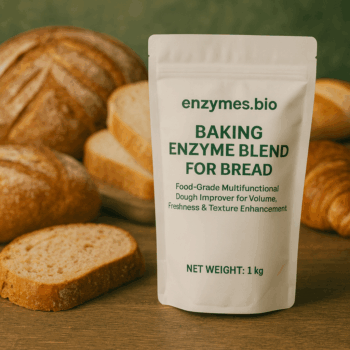Product Description
This product is produced by submerged fermentation of Aspergillus niger followed by purification, formulation, and drying. The highly stable potent product is widely used in gluconic acid production, flour whitening, baking, medical applications, and in many other industries.
Mechanism
Glucose Oxidase can specifically catalyze β-D-glucose to form gluconic acid and hydrogen peroxide with the presence of oxygen.
A: C6H12O6 + O2 + H2O → C6H12O7 + H2O2
B: C6H12O6 + 1/2 O2 → C6H12O7
Product Standard
| ITEMS | INDEX |
| Particle size (%<40 mesh) | ≥80 |
| Loss on drying/(%) | ≤8.0 |
| Lead/(mg/kg) | ≤5.0 |
| Arsenic/(mg/kg) | ≤3.0 |
| Total viable count/(CFU/g) | ≤50000 |
| Coliform Bacteria/(CFU/g) | ≤30 |
| Escherichia coli (CFU/g) | <10 |
| (MPN/g) | ≤3.0 |
| Salmonella/(25g) | Not Detected |
Reaction Parameters
| Condition | Range |
| Activity Temperature | 25℃-60℃ |
| Optimum Temperature | 30℃-40℃ |
| Activity pH | 3.0-7.0 |
| Optimum pH | 5.5-6.3 |
Recommended Dosage
The recommended dosage is 0.01-1.5 kg/t DS. The dosage has to be optimized based on each application, the raw material specifications, product expectation, and processing parameters. It is better to begin the test with the convenient volume.
Safe Handling Precautions
Enzyme preparations are proteins that may induce sensitization and cause allergic types of symptoms in susceptible individuals. Prolonged contact may cause minor irritation for skin, eyes, or nasal mucosa. Any direct contact with the human body should be avoided. If irritation or allergic response for skin or eyes develops, please consult a doctor.
Package
Storage: Keep sealed in a dry and cool place and avoid direct sunlight.
Shelf life: 12 months in a dry and cool place.












